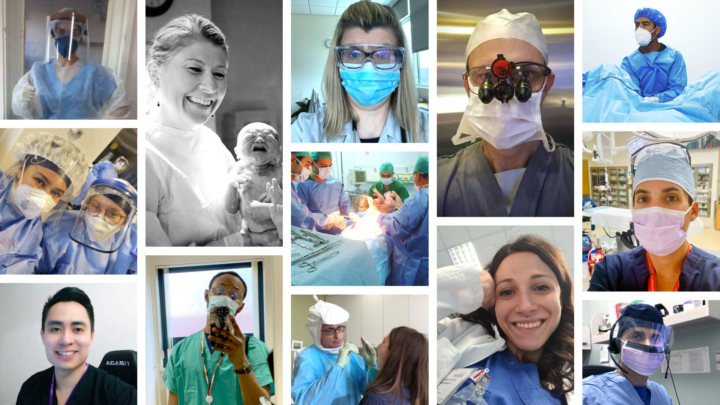
Death and taxes. They’re inevitable and warrant your attention. And according to a Sermo poll, the biggest barrier of tax planning for physicians is understanding complex laws and regulations.
One GP on Sermo adds, “Tax planning wisdom is needed. There is a need to seek the advice of a tax expert in regards of tax planning.” Another says, “Get a good tax adviser. If we can go through medical school, we can learn how to manage our taxes if we put our minds to it.” With the right help, you can mitigate your tax obligations, maximize your investment potential and get through tax season as smoothly as possible.
Read on as we cover tax planning for doctors, including tax fundamentals and actionable strategies to maximize your tax deductions.
This article is for educational purposes. Tax is a multifaceted, individualized topic. Before acting, consult a tax professional.
Common tax deductions for doctors
Whether you aim to maximize personal financial outcomes or strengthen your private practice’s bottom line and quality of care, you need a tax strategy.
As one Sermo member says, “Operating a medical practice involves various fixed costs—expenses that remain constant regardless of patient volume. Key fixed costs for physicians include: 1. Facility expenses—this encompasses rent or mortgage payments for the clinic space, property taxes, utilities and maintenance fees… Understanding and managing these fixed costs are crucial for the financial health of a medical practice. Effective budgeting and strategic planning can help physicians maintain profitability and provide quality care.”
A solid strategy starts with understanding tax deductions. If your only income comes from W-2 wages, you generally can’t deduct business-related expenses. If you’re a 1099 contractor, you can claim various deductions that reduce your taxable income.
First, note that 1099s can leverage standard deductions: In 2025 (taxes filed in April 2026), it’s $15,000 for single filers, $30,000 for those married filing jointly and $22,500 for heads of households. You automatically receive standard deductions, which means you don’t need to take extra steps other than selecting the standard deduction when you file your return.
Beyond standard deductions, 1099 contractors can deduct eligible business expenses, including:
- Home office space: You may be eligible to deduct the portion of your home that you use exclusively for work. Calculate your deductible percentage by dividing the office’s square footage by your home’s total square footage. For example, a 150-square-foot office in a 1,200-square-foot home is 12.5%. Apply this percentage to eligible expenses such as mortgage interest, utilities and maintenance.
- Business travel costs: You can deduct most forms of business travel. That includes business meals and flights, as long as they’re relevant to your practice.
- Continued medical education: Continued medical education (CME) costs you must pay to maintain your license are also deductible, but not all physicians know this. A Sermo poll reveals that only 11% of surveyed physicians are claiming deductions for CME, licensing fees, and work-related expenses. Take advantage of these whenever possible.
- Office supplies and equipment: Beyond writing off home office space, you may also deduct office supplies and equipment that you use for your practice, including furniture, disposable examination supplies and printing technology.
- Advertising overhead: You can deduct your practice’s advertising costs, whether traditional (billboards, signage, print) or digital (search engine optimization, digital ads) advertising.
There are other tax-deductible expenses to consider, like insurance premiums, retirement contributions and qualified business deductions. Speak with your tax consultant about how to maximize tax deductions based on your circumstances. Regarding professional help, a Sermo member advises, “Use a professional. Financial professionals don’t do surgery on themselves and doctors should not be trying to do financial work that you need training for on themselves either.”
Another physician on Sermo, an internal medicine doctor, adds, “Physicians cannot deduct losses like other businesses. Also we must accept what the insurance pays while other businesses have customers pay what they charge. Of course we are supposed to be altruistic and not care if we don’t get paid but when the bills for overhead are due the utility companies and landlord couldn’t care less.”
3 tax planning strategies for doctors
An internal medicine physician explains on Sermo, “Reduce taxes by investing in muni bonds, HSAs, 529 plans for children etc. to increase tax-exempt income.”
Whether you’re employed by a practice or self-employed, you can rely on these tried-and-true tax strategies. Consider how they apply to your circumstances and consult your tax advisor for further guidance.
1. Leverage Health Savings Accounts
The Employee Benefit Research Institute (EBRI) projects that you may need about $413,000 for lifetime healthcare expenses if you retire at 65. Health savings accounts (HSAs) provide sound coverage and a triple tax advantage: pre-tax contributions, tax-free growth and tax-free withdrawals for qualified medical expenses.
According to a Sermo poll, 10% of physicians on Sermo are already contributing to an HSA for tax-free medical expenses. Speak with a financial advisor to determine if an HSA is right for you.
2. Invest in tax-advantaged retirement accounts
Investing in tax-advantaged retirement accounts is a highly effective way to minimize tax obligations. In fact, a Sermo poll found that it’s the most popular tax-saving strategy for physicians. These accounts include 401ks, 403bs, cash balance plans and IRAs.
401k
There are two primary 401k types: Traditional and Roth. Both offer distinct tax advantages. With traditional 401ks, you contribute pre-tax dollars and owe taxes on withdrawals in retirement. With Roth 401ks, you contribute after-tax dollars and withdraw funds tax-free in retirement. High earners who expect to reduce their tax bracket in retirement benefit from Traditional 401ks’ tax deferral.
If you’re in private practice, you may qualify for a Solo 401k. These plans are for self-employed professionals with no employees—except a spouse. Like traditional 401ks, they offer tax-deferred growth.
403b
Non-profit organizations and government institutions, including many hospitals, typically offer 403bs. Like Traditional 401ks, they allow you to make pre-tax contributions and benefit from tax-deferred growth.
Cash balance plans
Cash balance plans are employer-sponsored defined benefit retirement plans that provide guaranteed future payouts through annual employer contributions and fixed interest credits. They’re similar to a 401k, but with the employer bearing investment risk. Tax-wise, employers fund cash balance plans with pre-tax contributions that the IRS taxes upon withdrawal.
IRAs
Like 401ks, there are two primary types of IRAs—Roth and Traditional. Roth IRAs require you to pay taxes on contributions, but qualified withdrawals in retirement are tax-free. Traditional IRAs defer taxes on contributions but tax retirement withdrawals as income.
IRAs have contribution limits of $7,000, or $8,000 if you’re age 50 or over—compared to 401k’s limits of $23,500 for individual contributions or $70,000 for combined employee-employer contributions. While doctors can benefit from a 401k’s higher contribution limits, many leverage a backdoor Roth IRA.
A backdoor Roth IRA is a strategy that converts nondeductible Traditional IRA contributions into a Roth IRA. High-income earners, including many physicians, use it to bypass contribution limits. But be wary: The IRS’s pro-rata rule can trigger unexpected taxes if you have other pre-tax IRA balances. Before acting, carefully assess your situation and consult a tax professional.
3. Give to charity
Charitable donations are among the common tax loopholes for doctors. A Sermo poll found that 10% of physicians used this strategy. Donations to a qualified charity are deductible for taxpayers who itemize their deductions using Schedule A of IRS Form 1040.
There are multiple tax-efficient ways you can give to charity, including cash, donor-advised funds and charitable remainder trusts. Cash donations are most common, and the IRS limits them to 60% of your adjusted gross income.

Understanding the basics of taxes for physicians
Let’s first look at the fundamentals of tax planning for physicians: 1099 vs W2, tax due dates, extension eligibility and tax brackets.
What’s the difference between 1099 independent contractors and W-2 employees?
Healthcare organizations classify physicians as either 1099 independent contractors or W-2 employees. It’s important to consider the financial trade-offs between these classifications.
As a 1099 contractor, you forgo employer-sponsored benefits but gain certain tax advantages. 1099 contractors can deduct a wide range of business expenses and access tax-advantaged retirement accounts with higher contribution limits. On the other hand, W-2 employees generally experience more stability.
When are taxes due?
Individual income tax returns are typically due on April 15. If tax day falls on a weekend or holiday, the deadline shifts to the next business day. The IRS also requires 1099 contractors to pay quarterly estimated taxes on or before April 15, June 15, September 15 and January 15.
Who is eligible for an extension?
Anyone can file for a six-month extension, which pushes the deadline to October 15.
An extension only delays paperwork, not your payment. To file, submit IRS Form 4868 by April 15 or your original due date. If you’re unable to pay your taxes in full, still file the form. The penalty for not filing is 5% of unpaid taxes monthly (up to 25%), while the penalty for paying late is just 0.5% monthly. Filing minimizes penalties—even without full payment.
What are the existing tax brackets?
Both W2 employees and 1099 contractors pay marginal tax rates. This means you pay progressively higher rates only on the portions of your income that exceed each bracket’s threshold, not on your entire income.
For reference, the 2025 tax brackets are as follows:
| Tax rate | For single filers | For married individuals filing joint returns | For heads of households |
| 10% | $0 to $11,925 | $0 to $23,850 | $0 to $17,000 |
| 12% | $11,925 to $48,475 | $23,850 to $96,950 | $17,000 to $64,850 |
| 22% | $48,475 to $103,350 | $96,950 to $206,700 | $64,850 to $103,350 |
| 24% | $103,350 to $197,300 | $206,700 to $394,000 | $103,350 to $197,300 |
| 32% | $197,300 to $250,525 | $394,600 to $501,050 | $197,300 to $250,500 |
| 35% | $250,525 to $626,350 | $501,050 to $751,000 | $250,500 to $626,350 |
| 37% | $626,350 or more | $751,600 or more | $626,350 or more |
Here’s a quick guide to filing statuses:
- Single filers: Unmarried, divorced, legally separated or widowed individuals file under this status.
- Married Filing Jointly: Married couples often file jointly to save time and money, though they can choose separate returns.
- Head of Household: To qualify, you must pay over half the household expenses and support a child or dependent, like an ailing relative.
Qualifying widow(er)s may file jointly with a deceased spouse for two years post-death if they don’t remarry and house a qualifying dependent. Consult accounting and tax services about your status and rate obligations.
Key takeaways
- Running a medical practice comes with high fixed costs and tax details, which requires foresight when it comes to tax season.
- HSAs, tax-advantaged retirement accounts and charitable donations are all great ways to reduce what you owe.
- Use a financial advisor to plan accordingly and make the most out of potential deductions.
Next step: Learn how other physicians manage their taxes
Physicians can adopt dozens of strategies for minimizing tax obligations: Employing family, claiming the child and dependent care tax credit and deducting mortgage interest on up to $750,000 of debt, just to name a few.
One Sermo member adds, “I use a Financial Advisor to make investments and also follow recommendations from my CPA in regards to a tax action plan. I have done well by them.” Your tax advisor will consult with you on what strategies are best.
While a financial advisor should be your primary point of call, peers can be your second. Knowing the steps that other physicians take to minimize their tax obligations and increase their investment potential can help you make the right choices for your situation. On Sermo, doctors talk money—alongside other topics that matter to them and their patients. Join the world’s largest platform for physicians.















